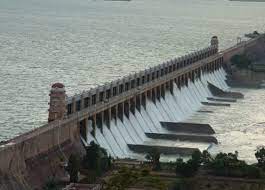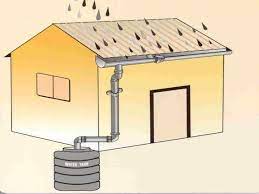NCERT Solutions for Class 10 Social Science Geography Chapter 3 Water Resources
1 . Multiple choice questions
(i) Based on the information given below, classify each of the situations as ‘suffering from water scarcity’ or ‘not suffering from water scarcity’.
(a) Region with high annual rainfall.
(b) Region having high annual rainfall and large population.
(c) Region having high annual rainfall but water is highly polluted.
(d) Region having low rainfall and low population.
Ans:
- (a) Region with high annual rainfall: Not suffering from water scarcity. High annual rainfall implies abundant water availability, reducing the likelihood of water scarcity.
- (b) Region having high annual rainfall and large population: Suffering from water scarcity. Despite high rainfall, a large population can strain water resources, leading to scarcity due to increased demand.
- (c) Region having high annual rainfall but water is highly polluted: Not suffering from water scarcity. While water pollution is a concern, high annual rainfall suggests water availability. However, polluted water can still impact quality and usability.
- (d) Region having low rainfall and low population: Suffering from water scarcity. Low rainfall combined with a low population implies limited water resources, increasing the likelihood of water scarcity due to insufficient supply for basic needs.
(b) Multi-purpose projects by regulating water flow helps to control floods.
(c) Multi-purpose projects lead to large scale displacements and loss of livelihood.
(d) Multi-purpose projects generate electricity for our industries and our homes.
(c) Multi-purpose projects lead to large scale displacements and loss of livelihood – This statement is not an argument in favor of multipurpose river projects; instead, it highlights a drawback or negative consequence associated with such projects.
(d) Multi-purpose projects generate electricity for our industries and our homes – This argument emphasizes the generation of electricity, which is one of the positive aspects of multipurpose river projects.

(iii) Here are some false statements. Identify the mistakes and rewrite them correctly.
(a) Multiplying urban centres with large and dense populations and urban lifestyles have helped in proper utilisation of water resources.
(b) Regulating and damming of rivers does not affect the river’s natural flow and its sediment flow.
(c) In Gujarat, the Sabarmati basin farmers were not agitated when higher priority was given to water supply in urban areas, particularly during droughts.
(d) Today in Rajasthan, the practice of rooftop rainwater water harvesting has gained popularity despite high water availability due to the Indira Gandhi Canal.
Ans:
(a) Multiplying urban centers with large and dense populations and adopting urban lifestyles has strained the proper utilization of water resources.
(b) Regulating and damming of rivers often disrupt the river’s natural flow and sediment transport.
(c) In Gujarat, the Sabarmati basin farmers were agitated when higher priority was given to water supply in urban areas, particularly during droughts.
(d) Today in Rajasthan, the practice of rooftop rainwater harvesting has gained popularity even though there is high water availability due to the Indira Gandhi Canal.
2 . Answer the following questions in about 30 words.
(i) Explain how water becomes a renewable resource.
Ans: Water is renewable due to the hydrological cycle. Evaporation, condensation, and precipitation replenish water bodies, ensuring continuous availability.
(ii) What is water scarcity and what are its main causes?
Ans: Water scarcity is inadequate access to safe water. Causes include over-extraction, pollution, population growth, and climate change.
(iii) Compare the advantages and disadvantages of multi-purpose river projects.
Ans: Multi-purpose river projects offer benefits like storage and electricity but can disrupt ecosystems, displace communities, and alter natural flow.
3. Answer the following questions in about 120 words.
(i) Discuss how rainwater harvesting in semi-arid regions of Rajasthan is carried out.
Ans: In semi-arid Rajasthan, rainwater harvesting involves a combination of traditional and modern techniques. Rooftop rainwater is collected through pipes and gutters, channeled into underground storage tanks known as beris. Recharge wells, or bawdis, and check dams are also utilized to capture runoff, replenishing groundwater sources. This practice helps mitigate water scarcity in the region, supporting agriculture and domestic water needs. The collected rainwater serves as a vital lifeline during dry periods, contributing to the sustenance of communities in these arid conditions.
(ii) Describe how modern adaptations of traditional rainwater harvesting methods are being carried out to conserve and store water.
Ans: Modern adaptations of traditional rainwater harvesting methods integrate technological advancements with established practices. In urban areas, rainwater from rooftops is collected and stored in tanks, often equipped with filtration systems. Additionally, innovative techniques such as percolation pits, contour bunds, and farm ponds mimic traditional structures, capturing rainwater and allowing it to percolate into the ground.

These adaptations aim to enhance water self-sufficiency, mitigate groundwater depletion, and bolster ecosystem resilience. By combining the wisdom of the past with contemporary knowledge and tools, these methods contribute to effective water conservation and sustainable resource management.
Thanks for reading NCERT Solutions for Class 10 Social Science Geography Chapter 3.